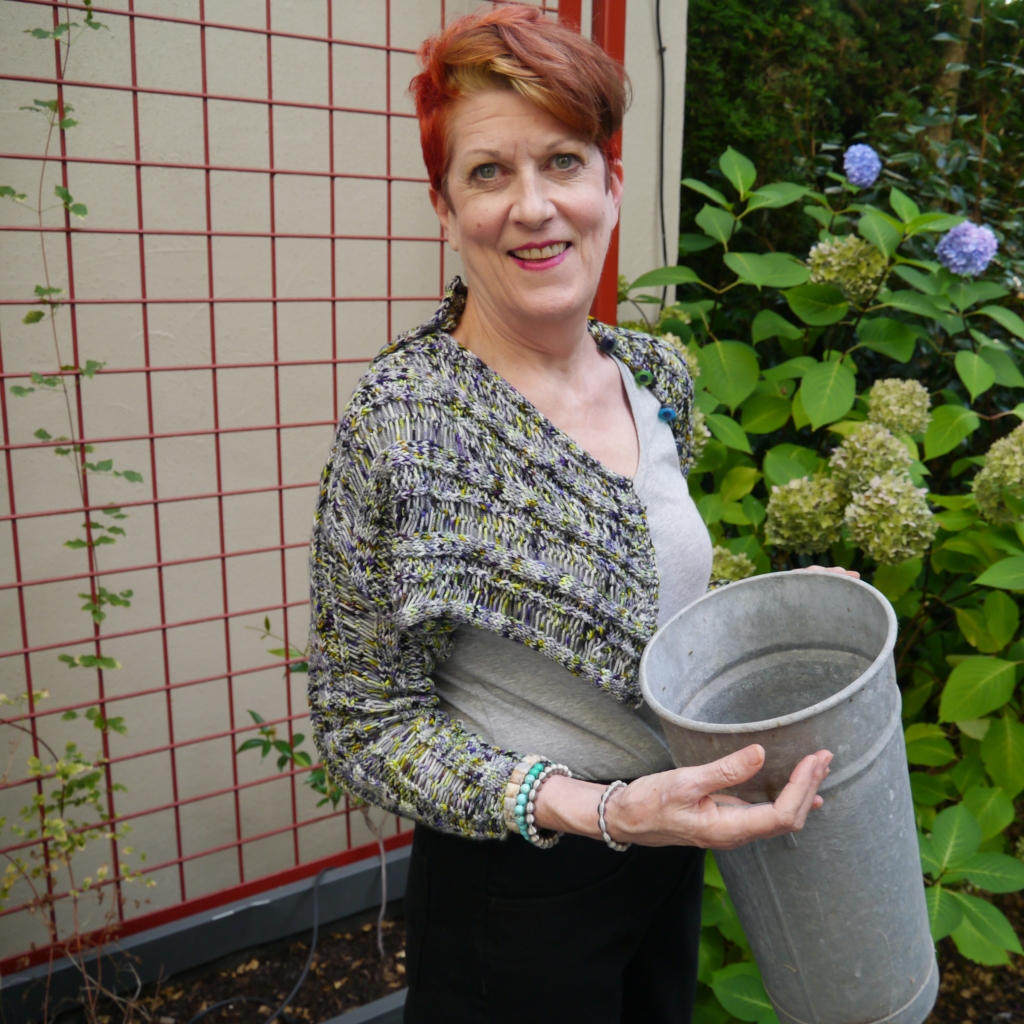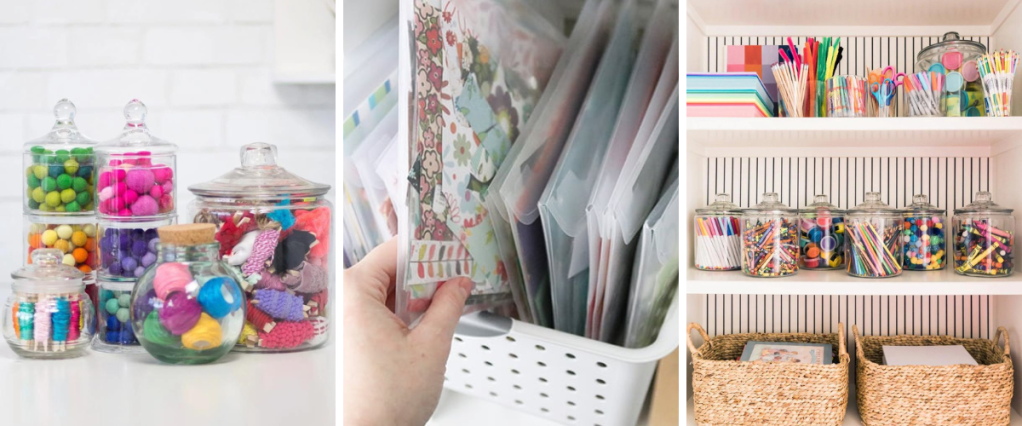We’re thrilled to announce that we’re now offering a new pattern, the Clapham Shrug by Jill Wolcott, for FREE when you sign up for our newsletter. Today we’re featuring an interview with Jill, and chat about her design inspiration. Keep reading to learn more!
An Interview with Jill Wolcott:
Q: How did you come to knitting and designing?
A: I came to knitting through design. I went to technical school for pattern making and garment construction, then moved on to my design education. I was primarily a sewer, although I knit an occasional sweater.
After a move to a new city, I found myself needing a focus as I couldn’t find a job. I saw a knitting machine, and spent the next eight years learning knitwear and designing. In about 1994 I began knitting by hand in my off hours and found so much satisfaction in it that I started to do both hand and machine knitwear design.
We moved to San Francisco in late 1998, and I never again had room to have my knitting machines in operation. By that time I was really only interested in hand knits, so I transitioned. I also started teaching at FIDM as a regular part-time instructor. I taught in both the design and product development areas, in course areas that balanced my creativity and technical expertise. I loved guiding students through their personal and professional growth, and I loved finding ways to share my knowledge and my enthusiasm for being a creative person.
We moved to Seattle in 2016 and I no longer teach except for my own business (online). I love to teach (don’t love the prep as much!) and to help knitters and knitwear professionals grow. I teach grading for knitwear which is a much-needed specialty as we expand sizing. I have always focused on fit and that is an integral part of my design, and how I teach.
Q: What are your favourite techniques and projects to design?
A: My favorite technique is generally whatever I am focused on at that moment. Fit is crucial to my design point of view, whether designing accessories or garments. I am now focused on creating patterns that can be Any Size.Any Gauge. These are based on spreadsheets that my colleague Jamie and I build (mostly she does the building and I am the design and fit brains). This work allows me to design a shape, then refine how we can make it fit a variety of bodies based on individual measurements. Right now I am also working on updating my sizing tables to reflect new numbers available for both Missy and Plus size bodies, including those over 55. It is a job in itself!
I love working in a collaborative environment. I work solo, but love doing collaborations with other designers, yarn companies, and especially with someone like Jamie who shares my fit interest, but comes at it from a completely different background. I am working on a book distilling all I’ve learned, Sweater & Life Adjustments, In 15 Lessons.
Q. What are some of your favourite designs?
A: I became obsessed with drop stitches about four years ago and I’ve done lots of things using them. I mostly love creating things that fulfill whatever my design vision might be. A few of my favorites are found in the Amalfi Collection.
Q: What was your inspiration for the Clapham Shrug? Did you start with the stitch patterns, or the yarn, or the idea of a shrug first?
A: I started with two skeins of the same, but different intensities, of yarn that I wanted to design something in. The dyer has a goth/punk vibe, so my mind went to Vivienne Westwood. Clapham Road is where her first London shop was. I recreated a stitch pattern from a sweater I bought that I love, then worked out how to make two sleeves that buttoned together.
I loved the result, and I felt that it would work in another type of yarn and have a different, but still Vivienne Westwood inspiration, so I did the lace weight version. Instead of two skeins, we worked from both ends of a skein, so the yarn plays out differently in the two pieces. Coordinated, but not match-y. I say we because the Clapham Junction sample was knitted by Judy Ellis of Handworks, Ltd. who does most of my sample knitting.
Inspiration is always hard to pin down. I like the idea of shrugs, but they are a difficult fit for many bodies. I feel like the Clapham Shrug works because it only seeks to create a yoke and sleeves. The way it is buttoned together can be varied for different looks. I love buttons, so this allowed me to dive into my collection of vintage and other buttons. I always look in my drawers before I go look for new ones. The buttons on the DK version are substituting for ones I couldn’t find (a chronic problem for a creative person). I ordered them online in the early months of the pandemic and I was delighted when they arrived. They are not as awesome as the others (I did eventually find them!), but a little younger, which suits the yarn.
Q. What’s a question you wish I asked?
A: There are a few things I’d love to add here!
Notes on Blocking
I think it is appropriate to talk here about blocking and caring for your hand or other knits. I both wet block and steam block both my swatches and finished knitting. Wet blocking allows the yarn to relax into what it will be, and steam blocking gives a little extra polish to the fabric. If you’re looking for a few tips and tricks, I do have some Steam Blocking Videos you can check out.
I wash my hand knits in the gentle cycle of my washer. If there is a question about agitating them, I simply let them soak, spin out the water, then lay them out. That is also what I did when I had a top-load machine. I don’t send any of my knits, including my husband’s, to the dry cleaner. Washing will generally improve them!
But you need to know what will happen, which means getting knowledgeable about fiber content, yarn structure, and color fastness. If you have a swatch, try out blocking method(s) on the swatch; it should give you a fairly good idea of what will happen when you wash the finished product.
Did you know that cashmere loves to be washed? Take the money you will save on dry cleaning and use it to buy better quality cashmere. I have sweaters that are more than 20 years old that are still fabulous. Less expensive versions didn’t hold up or were scratchy to my skin.
Super wash merino grows quite a bit when introduced to water, so blocking can be a little scary. A quick spin in the dryer to remove water and remind the fibers to contract will give the best result. If you didn’t block your swatch you may be very surprised at the end result.
Fibers that your skin finds scratchy will generally not improve over time or by treating with softeners. So indulge in things you can wear for a long time, enjoy working with them as you make things, then enjoy them into the future as finished pieces. Your cost per wear will definitely balance out over time! For kids, yeah, grab that durable, washable yarn. They are not going to wear it that long.
Notes on Sizing
I am also passionate about sizing and fit. I ended up knowing most of what there is to know about grading, sizing, and fit, so I teach professional development classes. I am embarking on a new pattern format (Clapham is one version) which allows the knitter more control, and allows me to do less pattern writing. Ultimately I am seeking to provide patterns that will fit any body within a specific design. My lovely colleague Jamie builds amazing Excel work books to figure everything out. Sign up for my newsletter and read about my sizing adventures on my blog. I am leading a Sizing [R]Evolution, the purpose of which is to get away from categorizing, to teach about your individual body, and to make designs that work for nearly everyone.
My Website is full of Amazing Things!
I have a type of dyslexia where I have a hard time with directional cues and cannot flip things in my brain as quickly as I want to. Also, I mix up numbers. Oy. As a result, because of issues I had with standard charts, I came up with a charting system called Action charts. It is WYSIWYD (what you see is what you do), so instead of representing the right side of the knitting, it shows you what you are seeing or doing. Purls are always purls, knits are always knits, etc. It has given a lot of knitters access to charts that could not previously suss them out.
You can find a few of my favorite tools on my website linked below:
Thanks to Jill for taking the time to answer our questions!
The Clapham Shrug
A few details: The Clapham Shrug includes the 2 latest patterns from designer Jill Wolcott. Featuring her “any size, any gauge” technique, this sleeve and yoke combine and button together to make a shrug you can knit in laceweight (Clapham Junction) or DK (Clapham Road). Both patterns are included together in one PDF along with schematics, written charts, and worksheets to help you knit the perfect size. You’re going to love this new autumn knit!
Yarn: Squish DK from Fiona Kay Knits (Clapham Road); Meridian from Anzula Luxury Fibers (Clapham Junction)
Needles: US2/2.75mm and US 4/3.5mm (Clapham Road); US2/2.75mm and US 3/3.25mm (Clapham Junction)
Download your free copy when you sign up for our email list today!
We hope you enjoy the pattern and can’t wait to see your versions! Please share them with us on social media using the hashtag #eucalan.
Like this post? Pin it!















































